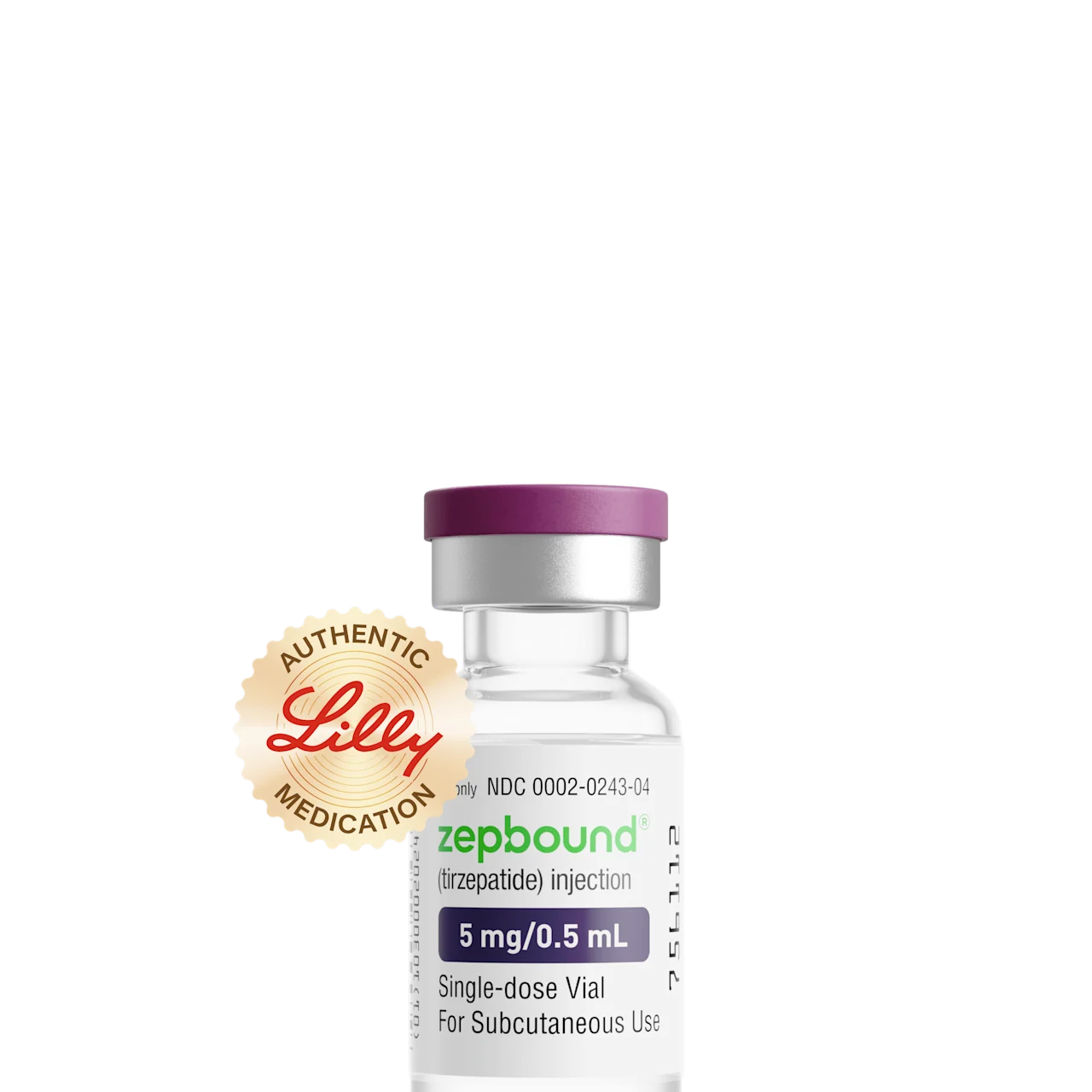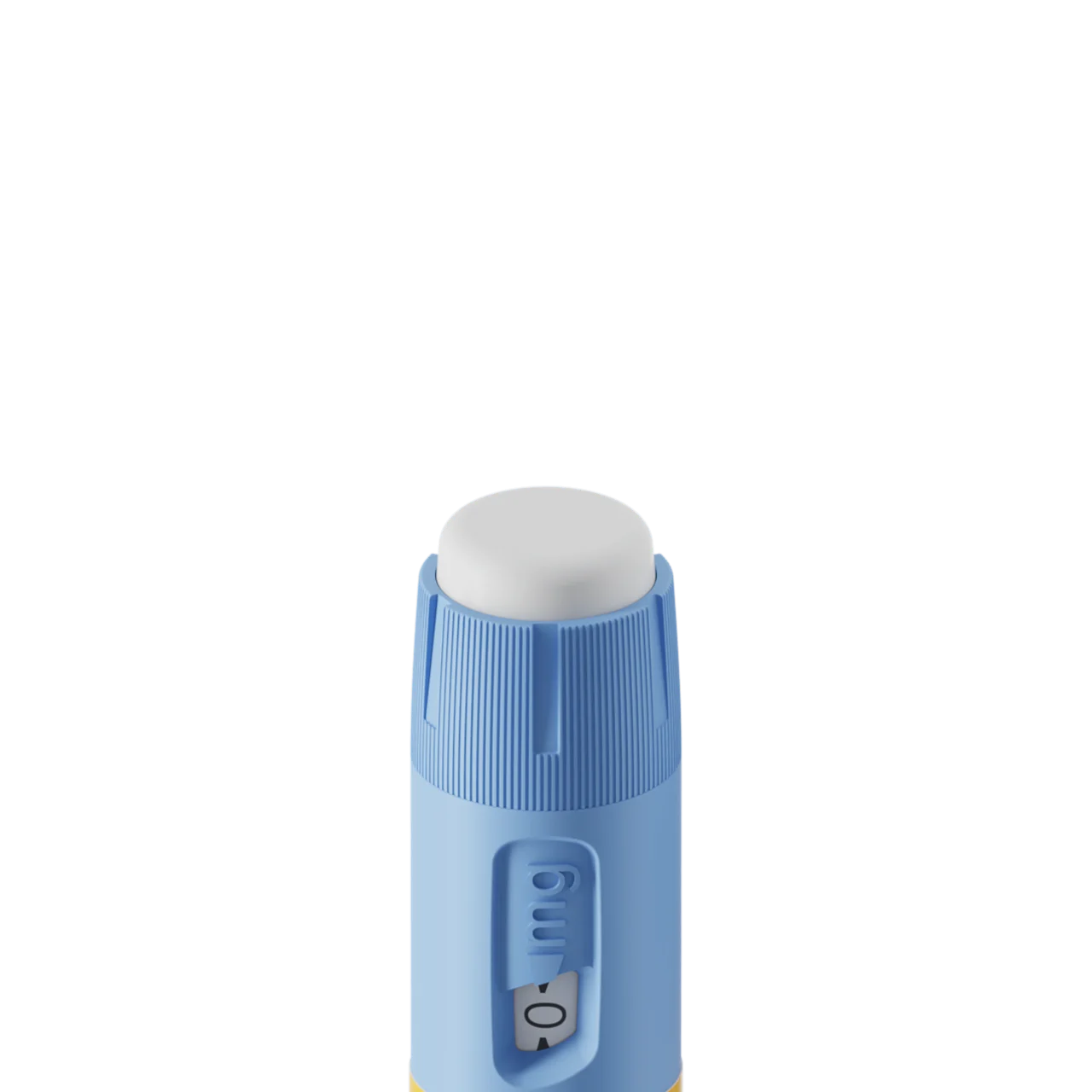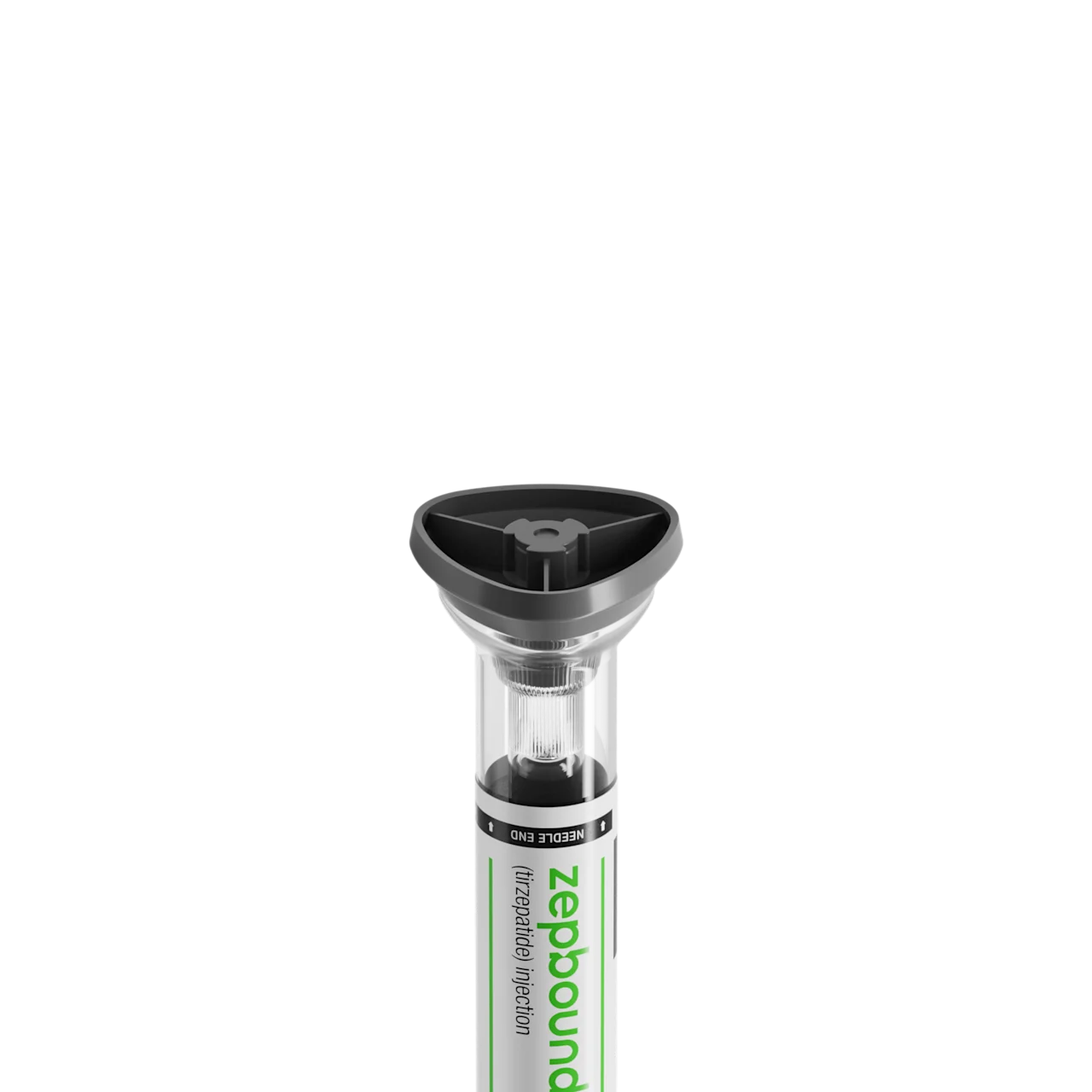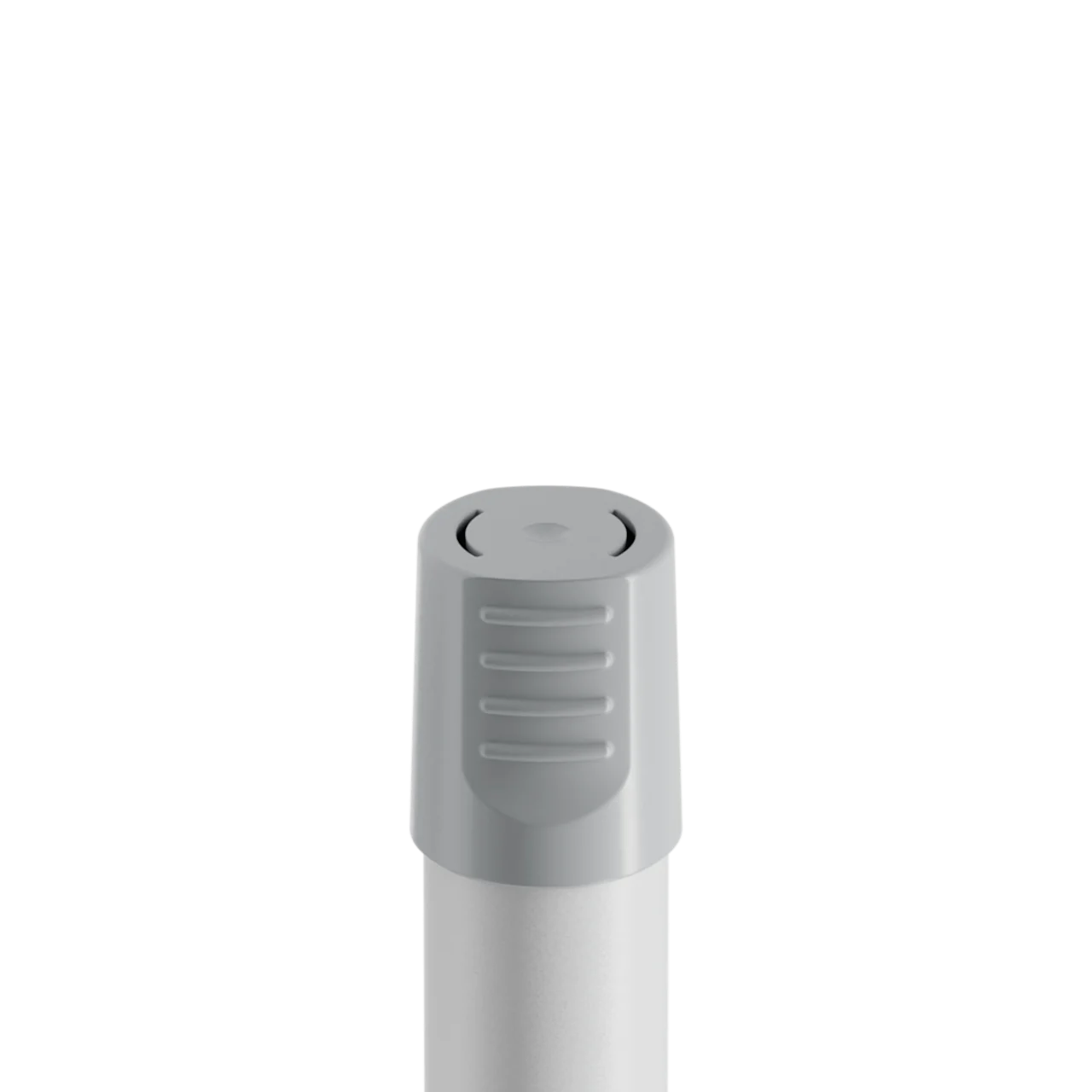Key takeaways
Wegovy and Ozempic both contain the same active ingredient: semaglutide.
While Wegovy is FDA-approved for weight loss, Ozempic is FDA-approved to treat type 2 diabetes, though some doctors may prescribe Ozempic off-label for weight management.
Some of the available dosages of each medication are different. Also each Wegovy injection pen has a built-in needle, while Ozempic pens come with needles that you’ll attach to the pen before each dose.
Here's what we'll cover
Key takeaways
Wegovy and Ozempic both contain the same active ingredient: semaglutide.
While Wegovy is FDA-approved for weight loss, Ozempic is FDA-approved to treat type 2 diabetes, though some doctors may prescribe Ozempic off-label for weight management.
Some of the available dosages of each medication are different. Also each Wegovy injection pen has a built-in needle, while Ozempic pens come with needles that you’ll attach to the pen before each dose.
If you are struggling with overweight and obesity or are living with type 2 diabetes, you’ve likely heard of Wegovy and Ozempic. Both medications are GLP-1s (glucagon-like peptide-1 receptor agonists) and contain the same active ingredient (semaglutide). Since the two drugs have the same active ingredient, it is fair to ask: is Wegovy the same as Ozempic?
The answer is yes…and no. Wegovy and Ozempic are the same drugs, sold under different brand names. The main differences are the amount of semaglutide in each pen and what they’ve been approved for. Semaglutide was first approved under the brand name Ozempic in 2017 as a treatment for type 2 diabetes. In 2021, the US Food and Drug Administration (FDA) approved the drug under the brand name Wegovy as a weight loss medication. Doctors often prescribe both for weight loss, but there are a few key differences between them.
Wegovy vs. Ozempic: are they the same?
Wegovy and Ozempic are brand-name injectable prescription drugs containing the same active ingredient: semaglutide. Both belong to a class of drugs known as glucagon-like peptide-1 receptor agonists (GLP-1 agonists or GLP-1s). Other drugs in this class include Rybelsus (which is an oral medication), Saxenda, Trulicity, and Victoza.
Although Ozempic and Wegovy share many similarities, the FDA has approved Ozempic and Wegovy for different uses.
The FDA has approved Ozempic for:
Controlling blood sugar in adults over 18 years old with type 2 diabetes mellitus
Reducing the risk of major cardiovascular health problems, such as heart attack, stroke, and death in adults with type 2 diabetes and heart disease
In contrast, the FDA has approved Wegovy for chronic weight management in people 18 years and older with either:
Obesity: body mass index (BMI) of 30 kg/m2 or greater
Overweight: BMI of 27 kg/m2 or greater with at least one weight-related medical condition, such as type 2 diabetes, high blood pressure (hypertension), or high cholesterol
In 2024, the FDA approved an additional indication for Wegovy: to reduce cardiovascular risk in adults with obesity or overweight and established heart disease.
Another notable difference between the two drugs is how you use Ozempic and Wegovy pens. With Wegovy, each injection pen has a built-in needle. After you use the pen once, you’ll dispose of it in a sharps container. Ozempic, on the other hand, comes with needles that you’ll attach to the injector pen before each dose. Then you’ll dispose of the needle in a sharps container, but continue using the same pen several times.
Wegovy vs. Ozempic: key points
All of the details that differentiate Wegovy vs. Ozempic might be overwhelming. Here are some highlights of several key differences and similarities between these two medications:
Wegovy | Ozempic | |
|---|---|---|
Active ingredient | Semaglutide | Semaglutide |
FDA-approved use | For weight loss, along with diet and exercise, in adults with obesity (BMI of 30 or greater), or overweight (BMI of 27 or greater) with at least one weight-related medical condition, such as type 2 diabetes or high blood pressure To reduce the risk of major cardiovascular problems such as heart attack, stroke, and death in adults with heart disease and obesity or overweight | To improve control of blood sugar in adults with type 2 diabetes, along with diet and exercise To reduce the risk of major cardiovascular problems such as heart attack, stroke, and death in adults with type 2 diabetes and heart disease |
Most common side effects | Nausea, vomiting, abdominal pain, diarrhea, or constipation | Nausea, vomiting, abdominal pain, diarrhea, or constipation |
Typical dosing | Once weekly injection | Once weekly injection |
Maximum weekly dose | 2.4 mg | 2 mg |
Cost without insurance* | $1,349.02 | $935.77 |
*List price for one carton, according to Novo Nordisk. Your actual cost may vary depending on your location, pharmacy, insurance coverage, and eligibility for savings programs.
Whether you’re interested in Wegovy and Ozempic for managing type 2 diabetes, weight loss, or both, speak to your healthcare provider. They can help you determine which medication is right for you and create a safe and effective treatment plan.
How does Ozempic work?
As a GLP-1, Ozempic acts the same way as the natural hormone GLP-1: It binds to GLP-1 receptors, and tells the pancreas to release insulin into the bloodstream when blood sugar levels spike. Increased insulin in the body brings blood sugar levels back down. Since Ozempic mimics the GLP-1 hormone, it is highly effective at stabilizing blood glucose in people with type 2 diabetes.
Another way Ozempic keeps blood sugar stable is by slowing down digestion and keeping food in the stomach for longer. This limits how much sugar gets released into the bloodstream and also lowers food intake by decreasing appetite. Finally, GLP-1 receptor agonists such as Ozempic tell the brain you’re full after eating, which adds another layer of appetite regulation.
Because of these effects on appetite and food intake, Ozempic is often prescribed off-label for weight loss.
How does Wegovy work?
Semaglutide is the active ingredient in both Ozempic and Wegovy, so Wegovy works the same way as Ozempic does. By ramping up the body’s levels of GLP-1, Wegovy keeps food in the stomach for longer and also sends signals to the brain, letting it know you’re full. All of that helps regulate your appetite and leads to significant weight loss.
In one clinical trial, participants who took the highest dosage of Wegovy combined with lifestyle changes lost an average of 15% of their body weight by the end of the 68-week trial.
Rx weight loss with Ro
Get access to prescription weight loss medication online
Risks and side effects of Ozempic and Wegovy
Since Ozempic and Wegovy contain the same active ingredient, semaglutide, side effects are very similar for the two drugs. In general, side effects are most common when you start using Ozempic or Wegovy and as you increase your dose. Higher doses of Wegovy and Ozempic can have a higher risk of side effects.
Common side effects of Ozempic and Wegovy include:
Nausea
Vomiting
Abdominal pain
Diarrhea or constipation
Injection site reactions, such as pain or skin irritation
Serious side effects are possible with Ozempic and Wegovy but rare. They can include:
Pancreatitis (inflammation of the pancreas) or gallbladder problems
Hypoglycemia (low blood sugar) when taken along with insulin or certain diabetes pills like glimepiride or glipizide
Kidney injury
Diabetic retinopathy
Severe allergic reaction
When deciding between Wegovy and Ozempic, it’s important to consider that side effects may be more likely with Wegovy (depending on your prescribed dosage) as Wegovy is available in a higher dose than Ozempic. In clinical trials of participants taking 1 mg of Wegovy once a week vs. 2.4 mg of Wegovy once a week, participants who took a 2.4 mg dose reported more side effects. If you have concerns about potential side effects, speak with your healthcare provider about which drug might be right for you.
Ozempic vs. Wegovy: is one stronger?
The typical maintenance dose of Wegovy is higher than Ozempic because it comes in higher doses of semaglutide. While Ozempic is available in 0.25 mg, 0.5 mg, and 1.0 mg, and 2 mg strengths, Wegovy is available in 0.25 mg, 0.5 mg, 1.0 mg, 1.7 mg, and 2.4 mg single-use pens. This means Wegovy can be taken at a higher dose than Ozempic, though you do have to ramp up over five months. If appropriate, your healthcare provider can increase your Ozempic dosage to 2 mg once weekly for blood sugar control (the maximum dosage).
A typical Wegovy vs. Ozempic dosage schedule may be as follows, though depending on your response and side effect profile, your breakdown may be different:
Wegovy | Ozempic | |
|---|---|---|
Month 1 | 0.25 mg once a week | 0.25 mg once a week |
Month 2 | 0.50 mg once a week | 0.50 mg once a week |
Month 3 | 1 mg once a week | 1 mg once a week (typical maintenance dose) |
Month 4 | 1.7 mg once a week | 2 mg once a week (for additional blood sugar control) |
Month 5 and beyond (typical maintenance dose) | 2.4 mg once a week | 2 mg once a week (for additional blood sugar control) |
Wegovy vs. Ozempic costs
Wegovy is more expensive than Ozempic. Without insurance, Ozempic costs $935.77 for a 28-day supply, while Wegovy costs $1,349.02 per 28-day supply. Novo Nordisk, the manufacturer of both drugs, offers a savings card program for the medications, which may bring the cost down significantly if you have private or commercial insurance.
The Wegovy Savings Offer can help you get Wegovy completely for free if you have coverage or help you save up to $500 if you pay for your prescriptions with cash or if your insurance doesn’t cover Wegovy. You can find out if you are eligible and apply here.
The Ozempic Savings Card can bring the cost of Ozempic down to as low as $25 per month and is valid for two years. You can find out if you are eligible and apply here.
If you have insurance through a state or federal program, such as Medicare, Medicaid, or the VA, you are not eligible for either offer. However, you may still be able to save on Wegovy or Ozempic by using free pharmacy discount cards, such as those offered by GoodRx, Optum Perks, and others.
Wegovy vs. Ozempic for weight loss: which is better?
In a clinical trial that compared weekly use of semaglutide 1 mg and 2.4 mg, semaglutide 2.4 mg (the maximum dose of Wegovy) caused more weight loss than semaglutide 1 mg (the typical maintenance dose of Ozempic).
Another trial found that participants who took 2.4 mg of semaglutide (a common Wegovy dosage), along with diet and exercise lost an average of 15% of their body weight by the end of the 68-week trial. In comparison, people with diabetes taking 1 mg of semaglutide (a common Ozempic dosage), in tandem with diet and exercise, saw an average weight loss of 7% of their body weight over 68 weeks.
Both Wegovy and Ozempic can be effective treatment options for weight loss. A healthcare provider can help you determine if one of these medications is right for you. Ro Body, for example, combines access to GLP-1 treatment with personal coaching to help people lose weight and keep it off.
How much do you know about weight loss meds?
Not much at all
Just a little
I’m an expert
I want to learn more
Is Wegovy or Ozempic right for me?
Whether Wegovy or Ozempic is right for you is a personal decision best made by you with your healthcare provider. There are a number of things to consider when choosing between Wegovy vs. Ozempic, from your current health situation to your insurance coverage and budget.
If you are looking into GLP-1 drugs to manage your type 2 diabetes, Ozempic may be the better option, as it is FDA-approved specifically to treat type 2 diabetes. If you’re looking to lose weight, however, Wegovy might be a better fit for you given its FDA-approval. It is also available in higher dosage strengths and tends to drive more weight loss than Ozempic. Both medications may be prescribed to lower cardiovascular risk in people who have heart disease and either type 2 diabetes (in the case of Ozempic) or obesity or overweight (in the case of Wegovy).
Your tolerance for certain side effects may be another factor. While both medications share many side effects, the list of common side effects for Wegovy is longer than that for Ozempic and includes additional, non-digestive symptoms, such as headache, fatigue, and dizziness. What’s more, among the side effects they share—including nausea, vomiting, diarrhea, abdominal pain, and constipation—they are more commonly reported among people taking Wegovy vs. Ozempic. It’s also worth noting that certain serious side effects (e.g. suicidal thoughts and a small increase in heart rate) have been reported more often with Wegovy than Ozempic. While these are still rare, it may be a consideration for you.
Finally, your insurance coverage and eligibility for savings programs may factor into your decision. Without insurance, Wegovy is more expensive than Ozempic. Even with insurance, Wegovy may be more expensive as many plans—including Medicare—do not consider weight loss treatment “medically necessary.” Although, the inclusion of lowering cardiovascular risk as an additional indication for Wegovy may expand this drug’s coverage for people taking it for that reason.
DISCLAIMER
If you have any medical questions or concerns, please talk to your healthcare provider. The articles on Health Guide are underpinned by peer-reviewed research and information drawn from medical societies and governmental agencies. However, they are not a substitute for professional medical advice, diagnosis, or treatment.
Wegovy Important Safety Information: Read more about serious warnings and safety info.
Ozempic Important Safety Information: Read more about serious warnings and safety info.
Saxenda Important Safety Information: Read more about serious warnings and safety info.
Alabduljabbar, K., Al-Najim, W., & le Roux, C. W. (2022). The impact once-weekly semaglutide 2.4 mg will have on clinical practice: A focus on the Step Trials. Nutrients, 14(11), 2217. doi:10.3390/nu14112217. Retrieved from https://pubmed.ncbi.nlm.nih.gov/35684020/
Center for Drug Evaluation and Research. (2020). Ozempic Drug Trial Snapshot. U.S. Food and Drug Administration. Retrieved on May 16, 2024 from https://www.fda.gov/drugs/drug-approvals-and-databases/drug-trial-snapshot-ozempic
Collins, L. & Costello, R. A. (2024). Glucagon-like peptide-1 receptor agonists. StatPearls. Retrieved on May 16, 2024 from https://www.ncbi.nlm.nih.gov/books/NBK551568/
Cubanski, J., Neuman, T., Sroczynski, N., et al. (2024). A New Use for Wegovy Opens the Door to Medicare Coverage for Millions of People with Obesity. KFF. Retrieved on May 16, 2024 from https://www.kff.org/medicare/issue-brief/a-new-use-for-wegovy-opens-the-door-to-medicare-coverage-for-millions-of-people-with-obesity/
Davies, M., Færch, L., Jeppesen, O. K., et al. (2021). Semaglutide 2.4 mg once a week in adults with overweight or obesity, and type 2 diabetes (STEP 2): a randomised, double-blind, double-dummy, placebo-controlled, phase 3 trial. Lancet, 397(10278), 971–984. doi:10.1016/S0140-6736(21)00213-0. Retrieved from https://pubmed.ncbi.nlm.nih.gov/33667417/
Frías, J. P., Auerbach, P., Bajaj, H. S., et al. (2021). Efficacy and safety of once-weekly semaglutide 2·0 mg versus 1·0 mg in patients with type 2 diabetes (sustain forte): A double-blind, randomised, phase 3B trial. The Lancet Diabetes & Endocrinology, 9(9), 563–574. doi:10.1016/s2213-8587(21)00174-1. Retrieved from https://pubmed.ncbi.nlm.nih.gov/34293304/
Fryar, C. D., Carroll, M. D., & Afful, J. (2020). Prevalence of overweight, obesity, and severe obesity among adults aged 20 and over: United States, 1960–1962 through 2017–2018. NCHS Health E-Stats, 2020. Retrieved from https://www.cdc.gov/nchs/data/hestat/obesity-adult-17-18/obesity-adult.htm#Citation
NovoCare-a. (2024). Ozempic (semaglutide) injection 0.5 mg, 1 mg, 2 mg List Price & Insurance Coverage Explained | NovoCare. Novo Nordisk. Retrieved on May 16, 2024 from https://www.novocare.com/diabetes/products/ozempic/explaining-list-price.html
NovoCare-b. (2024). Ozempic (semaglutide) injection 0.5mg, 1 mg, or 2 mg Savings Offer | NovoCare. Novo Nordisk. Retrieved on May 16, 2024 from https://www.novocare.com/diabetes/products/ozempic/savings-offer.html
NovoCare-c. (2024). Wegovy (semaglutide) injection 2.4 mg List Price & Insurance Coverage Explained | NovoCare. Novo Nordisk. Retrieved on May 16, 2024 from https://www.novocare.com/obesity/products/wegovy/let-us-help/explaining-list-price.html
NovoCare-d. (2024). Wegovy (semaglutide) injection 2.4 mg Savings Offer & Support Program | NovoCare. Novo Nordisk. Retrieved on May 16, 2024 from https://www.novocare.com/obesity/products/wegovy/savings-offer.html
Rubino, D., Abrahamsson N., Davies M., et al. (2021). Effect of continued weekly subcutaneous semaglutide vs placebo on weight loss maintenance in adults with overweight or obesity. JAMA, 325(14), 1414. doi:10.1001/jama.2021.3224. Retrieved from https://jamanetwork.com/journals/jama/fullarticle/2777886
Singh, G., Krauthamer, M., & Bjalme-Evans, M. (2022). Wegovy (semaglutide): a new weight loss drug for chronic weight management. Journal of Investigative Medicine, 70(1), 5–13. doi:10.1136/jim-2021-001952. Retrieved from https://www.ncbi.nlm.nih.gov/pmc/articles/PMC8717485/
U.S. Food and Drug Administration (FDA). (2021). Approves new drug treatment for chronic weight management, first since 2014. [Press release]. Retrieved from https://www.fda.gov/news-events/press-announcements/fda-approves-new-drug-treatment-chronic-weight-management-first-2014
U.S. Food and Drug Administration (FDA-a). (2024). Highlights of Prescribing Information: Wegovy (semaglutide) injection, for subcutaneous use. Retrieved on May 16, 2024 from https://www.accessdata.fda.gov/drugsatfda_docs/label/2024/215256s011lbl.pdf
U.S. Food and Drug Administration (FDA). (2023). Highlights of Prescribing Information: Ozempic (semaglutide) injection, for subcutaneous use. Retrieved on May 16, 2024 from https://www.accessdata.fda.gov/drugsatfda_docs/label/2023/209637s020s021lbl.pdf
U.S. Food and Drug Administration (FDA-b). (2024). FDA Approves First Treatment to Reduce Risk of Serious Heart Problems Specifically in Adults with Obesity or Overweight. Retrieved on May 16, 2024 from https://www.fda.gov/news-events/press-announcements/fda-approves-first-treatment-reduce-risk-serious-heart-problems-specifically-adults-obesity-or
Weghuber, D., Barrett, T., Barrientos-Pérez, M., et al. (2022). Once-weekly semaglutide in adolescents with obesity. New England Journal of Medicine, 387(24), 2245–2257. doi:10.1056/nejmoa2208601. Retrieved from https://pubmed.ncbi.nlm.nih.gov/36322838/
Wilding, J. P. H., Batterham, R. L., Calanna, S., et al. (2021). Once-weekly semaglutide in adults with overweight or obesity. New England Journal of Medicine, 384(11), 989–1002. doi:10.1056/nejmoa2032183. Retrieved from https://pubmed.ncbi.nlm.nih.gov/33567185/


















